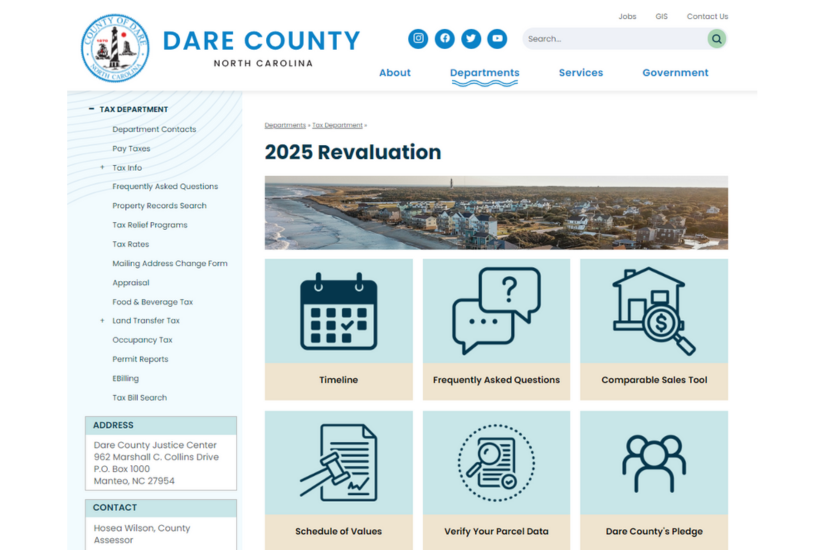Night Sky: Quadrantids meteor shower, and more highlights for January
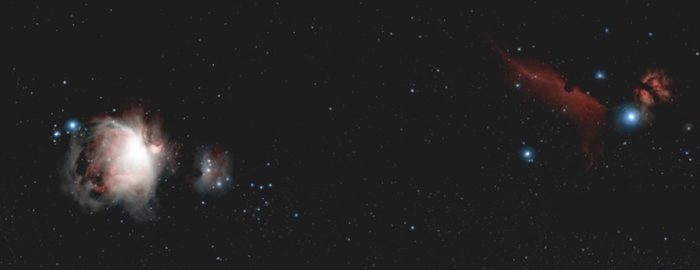
In astrophotography, we combine multiple images to increase the field of view and allow us to look at very large objects or show multiple objects that appear close to each other in the night sky.
This mosaic is a composition of eight frames. It shows three famous emission nebulae, the Orion Nebula, M42, (on the left), and on the right, we have the Horsehead (IC434), and Flame Nebulae (NGC 2024). Just to the right of the Orion Nebula is M43. M43 is a reflection nebula.
M42 has a visual magnitude of +4.0 and is about 1400 light years away from us. On clear nights you can see it without binoculars or a telescope.
M43 is often called de Mairan’s Nebula after Jean-Jacques Dortous de Mairan who first spotted it in 1769. It has a visual magnitude of +7.0, so you’ll need a good pair of binoculars or a telescope to view it. M43 is about 1800 light years from us.
You will need a telescope to see the Horsehead and Flame Nebulae. The Flame Nebula has a visual magnitude of +10. The Horsehead Nebula’s visual magnitude is +7.3. Both are thought to be 820 light years from us.
Here is a sky chart of the constellation Orion to make it easier to find these objects:
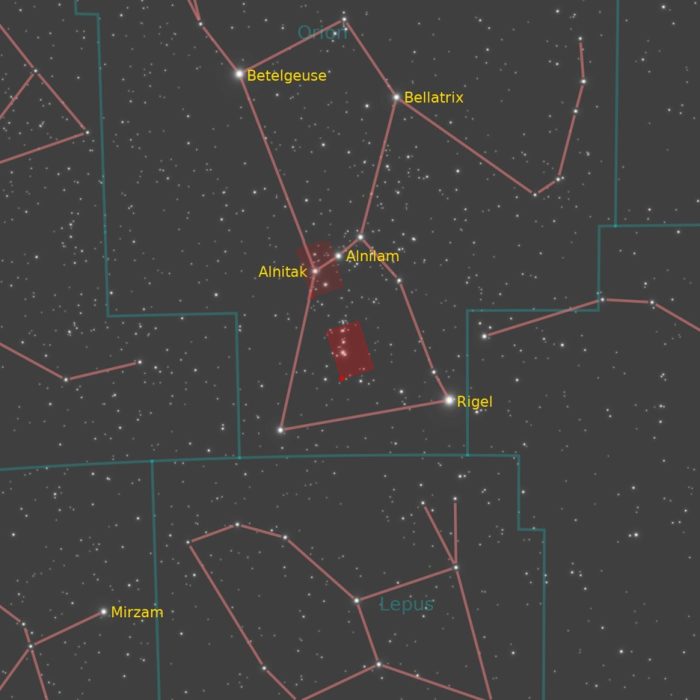
M42 is located in the middle of the lower red box. The Horsehead and Flame Nebulae are in the upper box.
By the way, if you prefer a closer view of these objects…
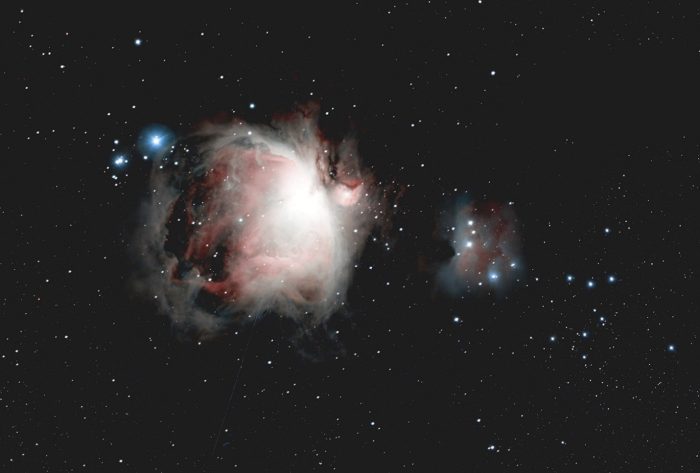
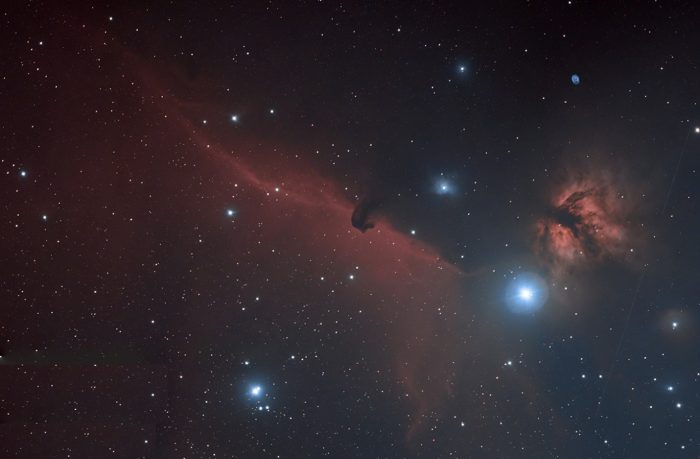
What you can look for in January’s Night Skies
Once again, Venus continues to dominate the pre-dawn sky! It rises at 4:20 a.m. and will be about 20 degrees above the eastern horizon at 6:00 a.m. With a visual magnitude of -4.1, it’s easy to see!
If you’re an early riser and want something a bit more challenging, you might want to try to find comet PanStarrs near the SE horizon. It’s got a visual magnitude of +8.5 so you’ll need a telescope, (and clear skies), to see it.
In the evening, the constellation Orion will be visible about 15 degrees above the ESE horizon. This could be a good chance to introduce your children to M42!
Following the Ecliptic from east to west, Uranus, Jupiter, Neptune, and Saturn are still visible.
The Quadrantids Meteor Shower peaks at 5 a.m. on January 3. Last year, this turned out to be one of the best meteor showers of the year. The Quadrinids originate a little behind the handle of the Big Dipper.
Moon Phases:
Last Quarter is January 3
New Moon is January 11
1st Quarter is January 17
Full Moon is January 25








